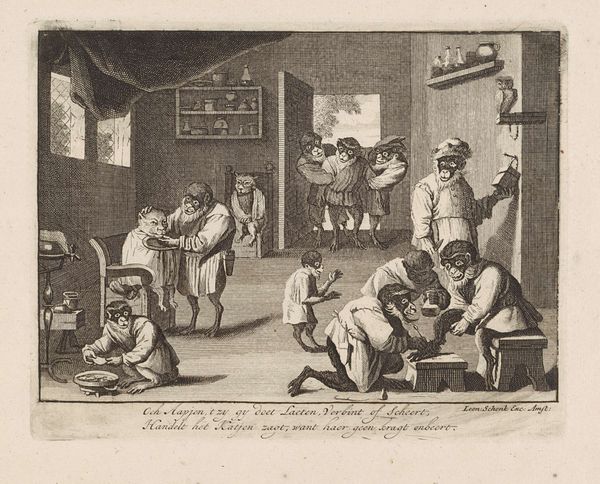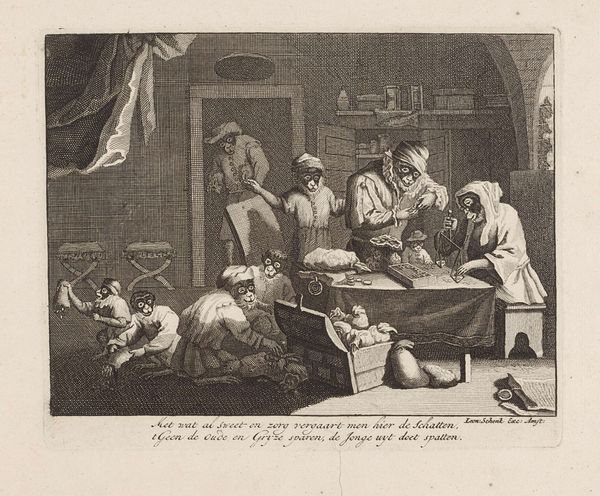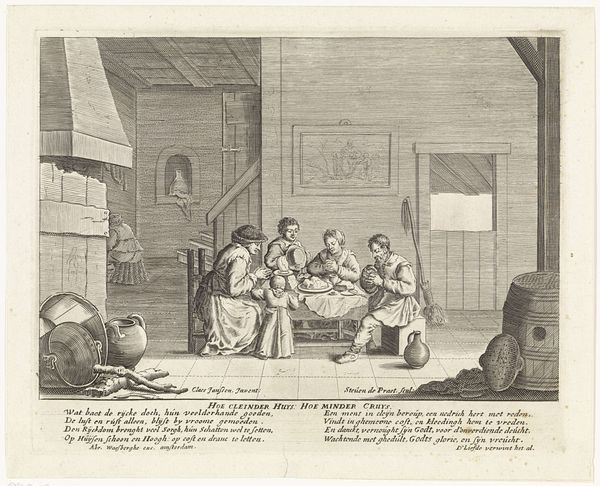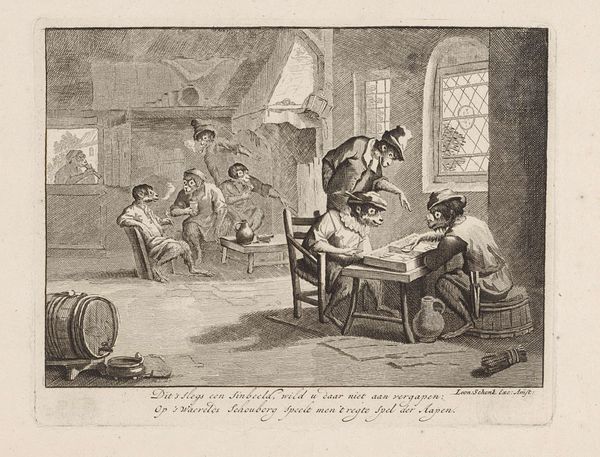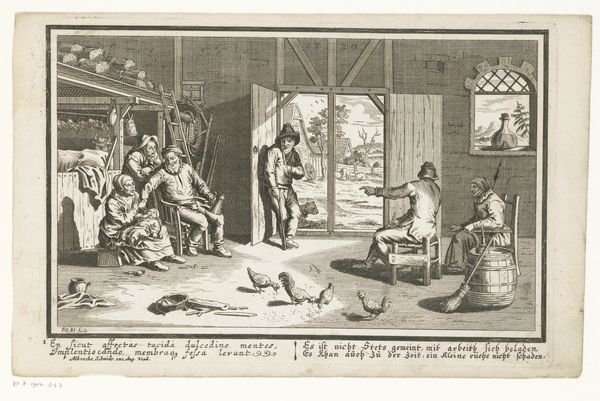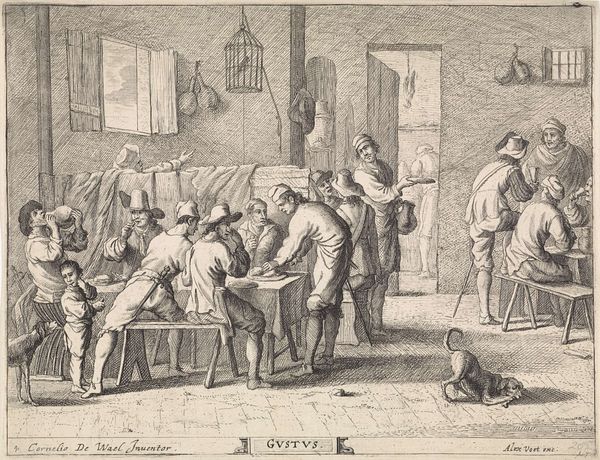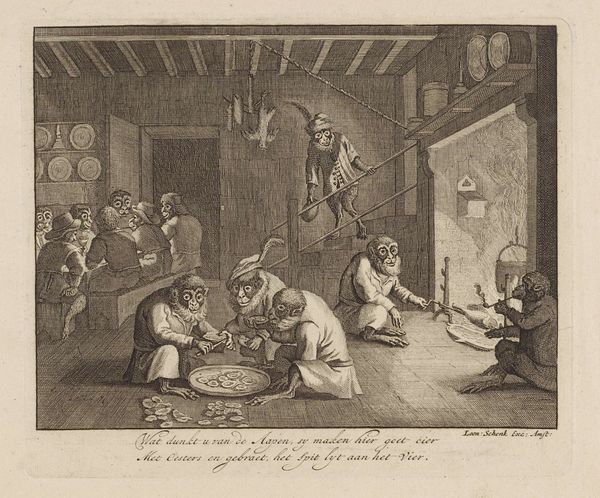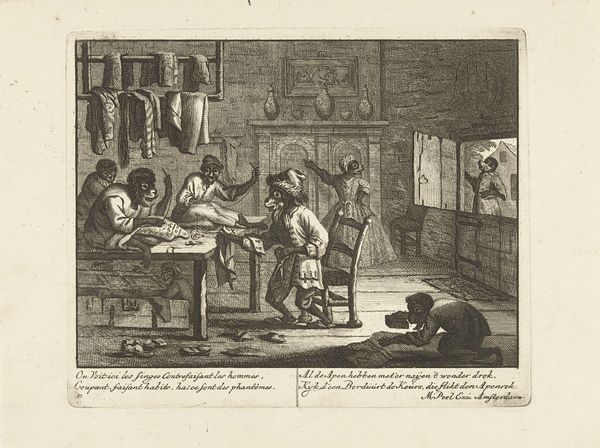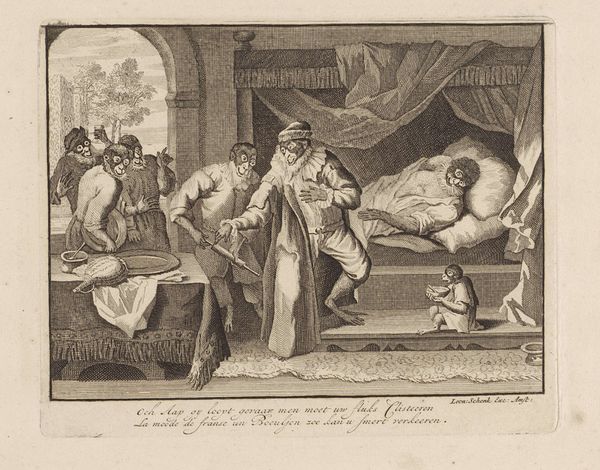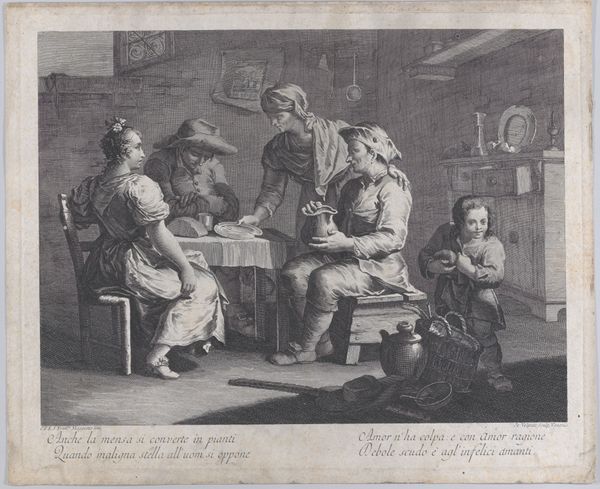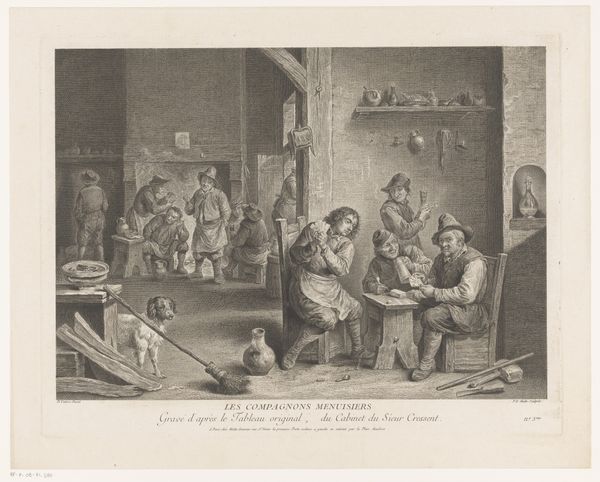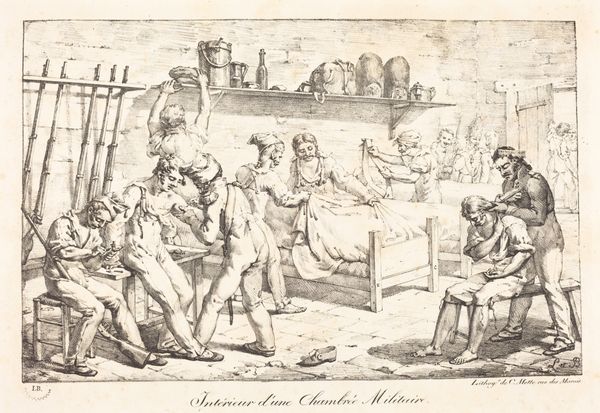
engraving
#
baroque
#
animal
#
figuration
#
line
#
genre-painting
#
academic-art
#
engraving
Dimensions: height 152 mm, width 195 mm
Copyright: Rijks Museum: Open Domain
This engraving by Leonard Schenk presents an intriguing scene of monkeys in domestic settings. The dominant symbol here is the monkey itself, dressed in human clothing, engaged in human activities such as spinning and playing instruments. In various cultures, the image of the monkey carries multifaceted meanings. Often, it represents imitation, craftiness, and even foolishness. We can trace this motif back to ancient folklore and mythology, where the monkey often appears as a trickster figure, challenging social norms and hierarchies. Think of Hanuman in Hindu tradition or the monkey gods in various indigenous beliefs. But consider how the perception of the monkey has changed over time. From its original symbolic association with mimicry and deception to its current status as a symbol of curiosity and playfulness. It's as if the subconscious mind recognizes in the monkey a reflection of our own primal nature, inviting us to confront our deepest instincts and desires. In this image, Schenk taps into this collective memory, creating a work that resonates with viewers on a visceral level. Thus, the cyclical journey of the monkey symbol continues, evolving with each new interpretation and cultural context.
Comments
No comments
Be the first to comment and join the conversation on the ultimate creative platform.
